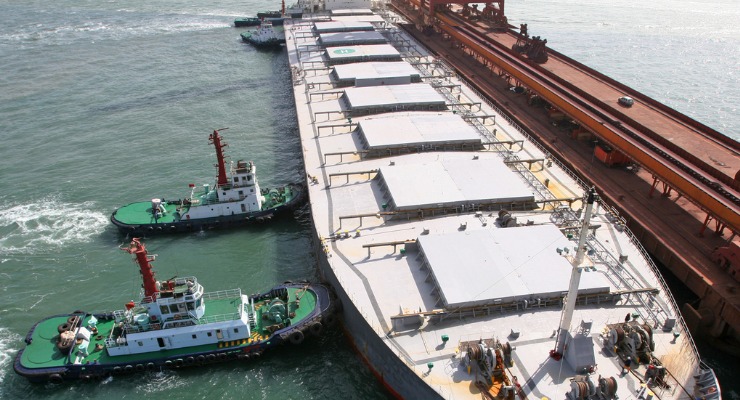If you are interested in shipping materials that require bulk cargo shipping, chances are your items will be best transported by sea with a bulk carrier. Sea transport for bulk goods is the most economical type of international transport. Items that are typically shipped as bulk cargo include sand, grain, coal, ore, fertilizer, metal concentrates, forest products, food items and gravel.
Bulk shipping has a long history with the first bulk carrier introduced in the nineteenth century. As reported by the International Maritime Organization (IMO), the first bulk carrier was introduced in 1852 and called the John Bowes. Over time breakbulk cargo shipping has advanced and 21st century carriers are created to be increasingly efficient and safe.
There is a lot involved in shipping breakbulk cargo by sea. The crew on board a sea freight ship is trained in ship navigation, equipment upkeep, and all of that is involved in loading and unloading the bulk cargo. Bulk cargo may also include potentially hazardous materials which require staff to understand safe handling procedures and regulations.
When it comes to the different types of ships that transport bulk cargo, carriers are often distinguished by size. For example, these include the Panamax ships and the Capesize vessels. Panamax ships got their name since they are vessels created in order to fit in the locks at the Panama Canal. Major renovations and updates at the Panama Canal will enable passage for even bigger vessels. Larger vessels require deeper water at the ports. This accommodation is not always available depending on port location.
Bulk carriers typically use special equipment to load and unload the cargo. Large cranes and conveyor belts help make the process more efficient and safer. Breakbulk cargo is sometimes identified as major or minor bulk. Most of the cargo is considered major bulk which includes things like grain, coal and ore. Items comprising the minor bulk category include agricultural materials, cement, and minerals.
Breakbulk cargo may be shipped in a variety of different ways. Sometimes an intermediate bulk container or IBC is used to ship certain items including liquids. These types of containers are sometimes made out of steel and other times are created from plastic. A skid box, bulkbox or a pallet box is also used for bulk shipping. If you are interested in transporting liquids, cylinder shaped shipping containers sometimes called drums are often used. Certain types of materials require insulated containers to maintained product stability.
As reported by the U.S. Coast Guard, there are around 360 commercial ports that serve the United States. Ports are required to manage a wide range of cargo including loose cargo, breakbulk cargo, liquid cargo, dry bulk and containerized cargo.

